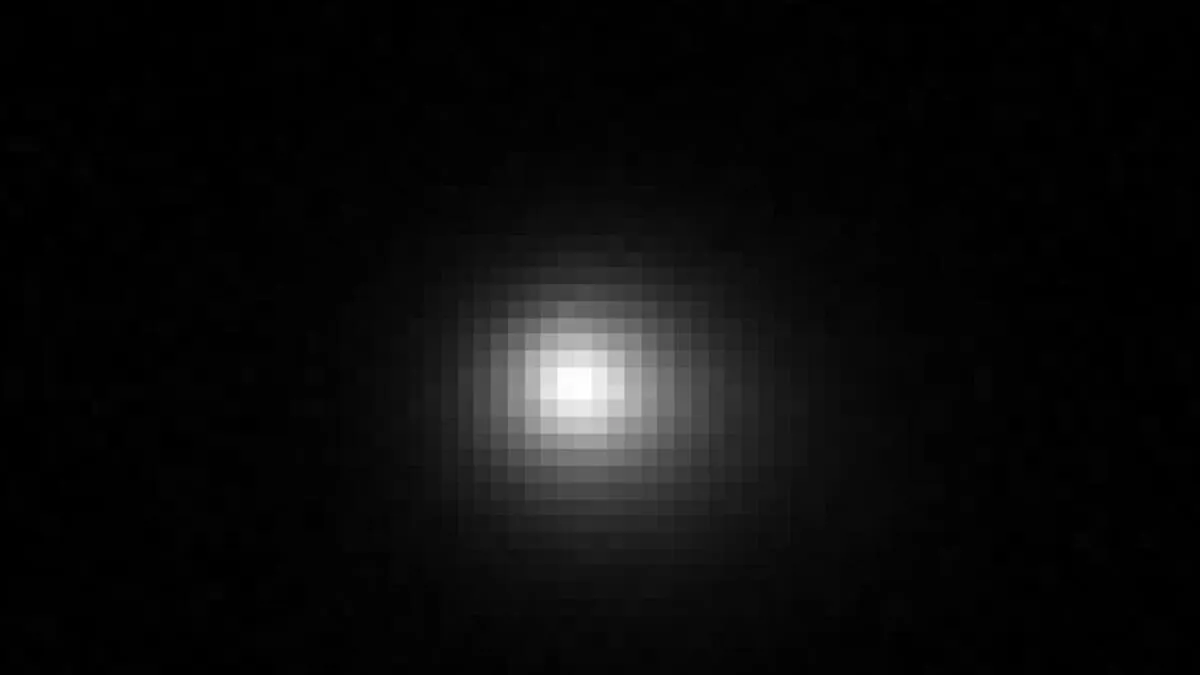
Nearly a month ago, a mysterious object was detected hurtling through the solar system, later confirmed as an interstellar visitor making its way toward the Sun. Following this revelation, numerous telescopes redirected their focus to study this wandering object. Interestingly, the newly inaugurated Vera C. Rubin Observatory was the first to capture images of 3I/ATLAS, an interstellar comet. In a remarkable twist of fate, astronomers at the observatory aimed their instruments at the precise section of the sky where the comet was located during its commissioning phase.
The Rubin Observatory, situated atop a mountain in the Chilean Andes, successfully recorded images of the comet on June 21, approximately ten days before its formal discovery. This groundbreaking observation was detailed in a recent paper published on the preprint website arXiv. The observatory, managed by the National Science Foundation (NSF) and the Department of Energy (DOE), is equipped with the largest digital camera ever constructed for astronomical purposes. Its massive, car-sized 3.2-gigapixel camera is specifically designed to capture ultra-high-definition images and videos of celestial objects.
The Rubin Observatory unveiled its first stunning images to the public on June 23, showcasing millions of galaxies and stars within the Milky Way over a span of just 10 hours. These images were not only visually striking but also provided crucial insights, revealing supernovas and distant galaxies that could aid astronomers in understanding the expansion of the universe. Given its revolutionary capabilities, it is no surprise that the Rubin Observatory was the first to capture 3I/ATLAS before any other telescope.
3I/ATLAS was initially detected in data collected by the Asteroid Terrestrial-impact Last Alert System (ATLAS) between June 25 and June 29, with another sighting occurring on July 1. By July 2, the Deep Random Survey remote telescope located in Rio Hurtado, Chile, had also observed the comet. The International Astronomical Union’s Minor Planet Center confirmed on July 2 that this comet originated from outside our solar system, marking the third confirmed discovery of an interstellar object.
Since its discovery, astronomers have been racing to collect as much data as possible on this enigmatic object. The Gemini North telescope on Maunakea, Hawaii, recently provided a close-up view of 3I/ATLAS, capturing the comet’s coma in exceptional detail. Initial studies suggest that 3I/ATLAS is the oldest comet ever found, estimated to be around 2 billion years older than our solar system. In comparison to the previously discovered interstellar objects, ‘Oumuamua and Comet 2I/Borisov, 3I/ATLAS not only exhibits a greater age but also travels at a faster speed, reaching a hyperbolic velocity of approximately 37 miles per second (60 kilometers per second) as indicated by a recent study pending peer review.
The early observations of 3I/ATLAS captured by the Rubin Observatory are significant because they represent the earliest images taken of the comet by a high-precision telescope. The new paper includes a total of 49 images; however, some were omitted due to being out of focus during the observatory's alignment sequence. Of the remaining images, nineteen were obtained during deliberate operations, confirming that 3I/ATLAS behaves like a typical comet, with a surrounding cloud of gas and dust enveloping its icy nucleus.
As the first telescope to observe the comet, the Rubin Observatory will also be the first to lose sight of it. On August 22, 3I/ATLAS will move out of the observational area currently monitored by the observatory. Until that time, the astronomers involved in this research will continue to monitor the interstellar visitor through Rubin’s impressive imaging capabilities.